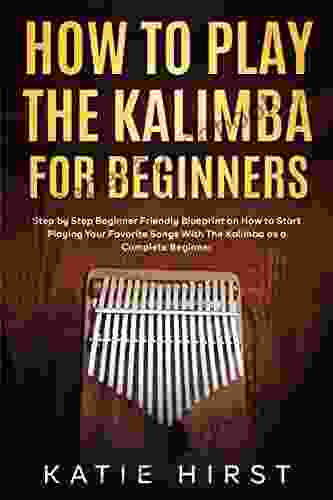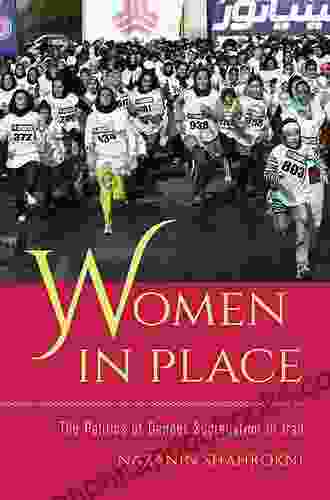The Politics of Gender Segregation in Iran: Unraveling a Complex System

In the heart of the Islamic Republic of Iran, gender segregation stands as a defining and controversial feature of the country's social and political landscape. This strict separation of men and women extends to various spheres of life, from public spaces and housing to education and the workforce.
5 out of 5
| Language | : | English |
| File size | : | 1030 KB |
| Text-to-Speech | : | Enabled |
| Screen Reader | : | Supported |
| Enhanced typesetting | : | Enabled |
| Word Wise | : | Enabled |
| Print length | : | 174 pages |
| Lending | : | Enabled |
Historical Roots and Religious Foundations
The roots of gender segregation in Iran can be traced back to ancient Persian traditions and customs. However, it was during the Islamic Revolution of 1979 that the concept of gender separation took on a profound religious dimension. The new regime, led by Ayatollah Khomeini, invoked Islamic principles to justify the implementation of strict gender segregation laws.
According to Islamic law (Sharia),men and women are seen as having different roles and responsibilities in society. Women are primarily responsible for domestic duties and child-rearing, while men are seen as the breadwinners and protectors. This traditional view of gender roles underpins the justification for gender segregation in Iran.
Social Control and Political Power
Beyond religious beliefs, gender segregation in Iran also serves as a tool of social control and political power. By strictly separating men and women, the regime aims to maintain traditional gender roles and prevent any potential threats to its authority. Gender segregation reinforces the notion that women should be under the control of men, either their fathers, husbands, or the state.
The enforcement of gender segregation laws is often carried out by government officials known as the morality police (Gasht-e Ershad). These officials patrol public spaces, enforcing dress codes and ensuring compliance with gender segregation regulations. Violations can result in punishment, ranging from fines to imprisonment.
Enforcement in Various Domains
Gender segregation in Iran is enforced in multiple aspects of daily life:
- Housing: In many Iranian cities, residential buildings are designed with separate entrances and staircases for men and women.
- Education: From primary school to university, boys and girls are educated in separate classes and often in different schools altogether.
- Public Spaces: Parks, libraries, and public transportation have designated sections for men and women.
- Workforce: Some occupations, particularly in the public sector, are restricted to men or women only.
Challenges and Controversies
Gender segregation in Iran has been the subject of ongoing debate and controversy. Critics argue that it violates basic human rights, limits women's opportunities, and perpetuates gender inequality. Supporters, on the other hand, view it as a necessary measure for preserving traditional values and protecting women's dignity.
Over the years, there have been several attempts to challenge gender segregation in Iran. In 2005, a group of women's rights activists launched the "One Million Signatures Campaign" petitioning for the abolition of discriminatory laws against women, including gender segregation. However, the campaign faced strong opposition from conservative elements within the regime.
Women's Agency and Resistance
Despite the strict enforcement of gender segregation laws, many Iranian women find ways to resist and negotiate the limitations imposed upon them. They engage in civil disobedience, challenge gender norms, and push for greater freedoms.
Examples of women's resistance include attending co-ed gatherings, participating in mixed-gender sports, and pursuing higher education in non-traditional fields. These acts of defiance demonstrate the resilience and determination of Iranian women to break down gender barriers.
Hope for Reform and Transformation
While gender segregation remains deeply ingrained in Iranian society, there is a growing recognition of the need for reform. A younger generation of Iranians is increasingly questioning traditional gender roles and advocating for greater equality.
Recent social and political developments, such as the rise of social media and the growing influence of the international human rights community, are also putting pressure on the Iranian government to address gender inequality and dismantle the system of gender segregation.
The politics of gender segregation in Iran is a complex and multifaceted issue that reflects the country's unique history, religious beliefs, and social dynamics. It is a system that has been used to control women and maintain traditional gender roles. However, it is also a system that is facing increasing challenges from within Iranian society and from the international community.
As Iran continues to evolve, the future of gender segregation remains uncertain. However, the growing voices of dissent and the determination of Iranian women to break down gender barriers offer hope for a more just and equitable future.
5 out of 5
| Language | : | English |
| File size | : | 1030 KB |
| Text-to-Speech | : | Enabled |
| Screen Reader | : | Supported |
| Enhanced typesetting | : | Enabled |
| Word Wise | : | Enabled |
| Print length | : | 174 pages |
| Lending | : | Enabled |
Do you want to contribute by writing guest posts on this blog?
Please contact us and send us a resume of previous articles that you have written.
 Book
Book Novel
Novel Page
Page Chapter
Chapter Text
Text Story
Story Genre
Genre Reader
Reader Library
Library Paperback
Paperback E-book
E-book Magazine
Magazine Newspaper
Newspaper Paragraph
Paragraph Sentence
Sentence Bookmark
Bookmark Shelf
Shelf Glossary
Glossary Bibliography
Bibliography Foreword
Foreword Preface
Preface Synopsis
Synopsis Annotation
Annotation Footnote
Footnote Manuscript
Manuscript Scroll
Scroll Codex
Codex Tome
Tome Bestseller
Bestseller Classics
Classics Library card
Library card Narrative
Narrative Biography
Biography Autobiography
Autobiography Memoir
Memoir Reference
Reference Encyclopedia
Encyclopedia Johann Sebastian Bach
Johann Sebastian Bach Glenn Schuler
Glenn Schuler Graham Nuthall
Graham Nuthall Wayne Miller
Wayne Miller George Hurchalla
George Hurchalla Sara Leman
Sara Leman Gershen Kaufman
Gershen Kaufman Lisa Ann Gallagher
Lisa Ann Gallagher Gordon Doherty
Gordon Doherty Gayle Mindes
Gayle Mindes Geoffrey Mcskimming
Geoffrey Mcskimming Helen Phifer
Helen Phifer Jay Shetty
Jay Shetty Gary Walker
Gary Walker Gladys Thompson
Gladys Thompson Hadiyah Bobbitt
Hadiyah Bobbitt H James Garrett
H James Garrett Monica Ali
Monica Ali George Couros
George Couros Gail Pan
Gail Pan
Light bulbAdvertise smarter! Our strategic ad space ensures maximum exposure. Reserve your spot today!

 Adrian WardUnveiling the Profound Wisdom of Shobogenzo: A Comprehensive Guide to Three...
Adrian WardUnveiling the Profound Wisdom of Shobogenzo: A Comprehensive Guide to Three...
 Brayden ReedUnveiling the Secrets of Joints: A Comprehensive Guide to Specialty Imaging...
Brayden ReedUnveiling the Secrets of Joints: A Comprehensive Guide to Specialty Imaging...
 Timothy WardStep-by-Step Beginners' Blueprint: Unlock the Joy of Playing Your Favorite...
Timothy WardStep-by-Step Beginners' Blueprint: Unlock the Joy of Playing Your Favorite... Shane BlairFollow ·12.7k
Shane BlairFollow ·12.7k Langston HughesFollow ·3.7k
Langston HughesFollow ·3.7k Ivan TurnerFollow ·17.2k
Ivan TurnerFollow ·17.2k Ian MitchellFollow ·5.6k
Ian MitchellFollow ·5.6k Thomas PynchonFollow ·7.2k
Thomas PynchonFollow ·7.2k Chuck MitchellFollow ·3.1k
Chuck MitchellFollow ·3.1k Dan BellFollow ·11.7k
Dan BellFollow ·11.7k Colby CoxFollow ·12.7k
Colby CoxFollow ·12.7k

 Ken Follett
Ken FollettDiscover the Enchanting World of Classical Piano with "10...
A Symphony of Timeless...

 Cody Russell
Cody RussellTheo On The Ice Boston Bay Vikings: A Hockey Adventure...
Theo On The Ice...

 Nathaniel Hawthorne
Nathaniel HawthorneBach for Easy Guitar: Unleash the Genius of the Baroque...
Johann Sebastian Bach, the undisputed...

 Brenton Cox
Brenton CoxAfrican Recipes For Every Concern: Delicious,...
Embark on a Culinary Journey to the Heart of...

 Lawrence Bell
Lawrence BellEasy Guitar With Notes Tab: Your Ultimate Guide to...
Unlock the World...

 Brenton Cox
Brenton CoxCarter On The Ice: A Thrilling Sports Novel
Synopsis ...
5 out of 5
| Language | : | English |
| File size | : | 1030 KB |
| Text-to-Speech | : | Enabled |
| Screen Reader | : | Supported |
| Enhanced typesetting | : | Enabled |
| Word Wise | : | Enabled |
| Print length | : | 174 pages |
| Lending | : | Enabled |






